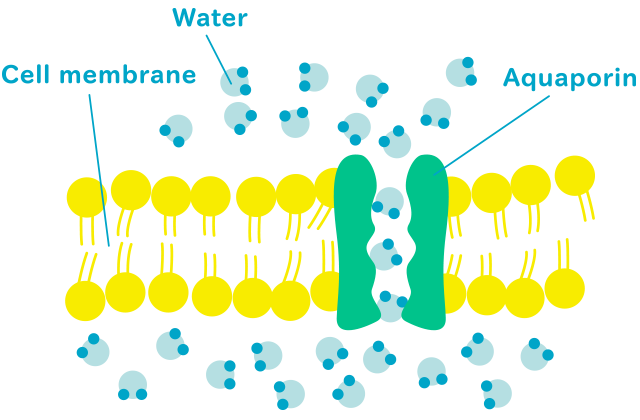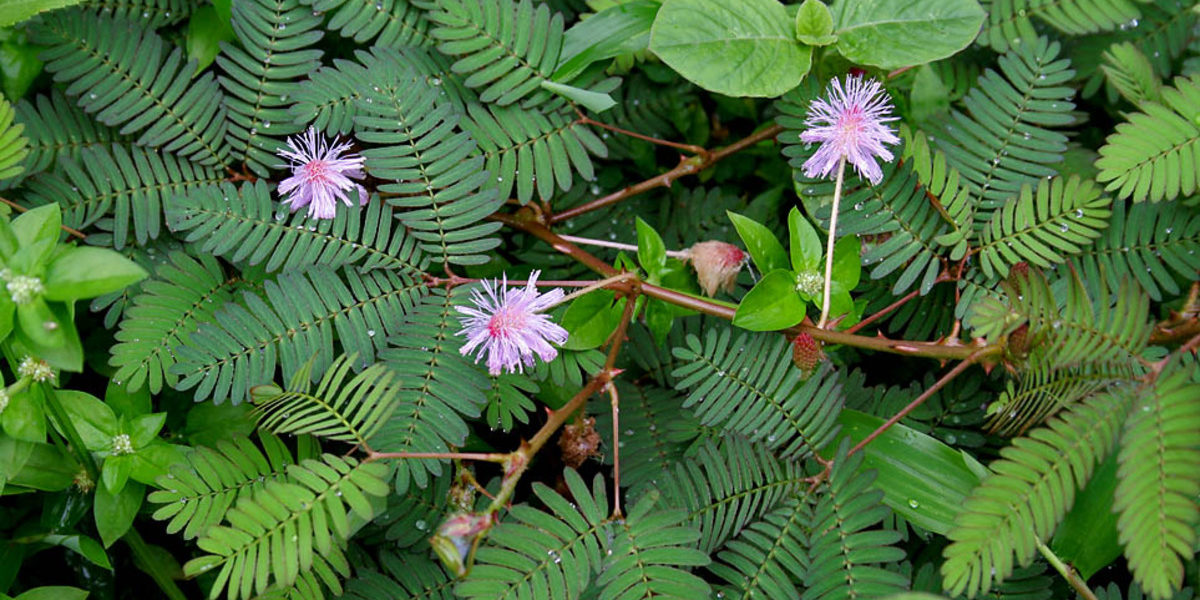If you think you’re shy, you should meet the plant known to botanists as Mimosa pudica! Also known as a touch-me-not, shame plant, or humble plant, M. pudica reacts rapidly to external stimuli – such as being touched, changes in heat, or changes in light intensity. The reaction generally includes the folding in of the plant’s leaves and the stem bending downward. These movements make the touch-me-not one of the most curious plants on the planet.
So how does the M. pudica react so quickly? The answer lies in the pulvini and changes in turgor pressure. Pulvini are the thickened bases of leaf stalks and leaves that act as joints for the plant. Because of the pulvini, M. pudica is able to fold in any direction. This manifests itself as what we see as “drooping” of the stem and folding of the leaves.

Turgor pressure refers to the force exerted by a fluid in a cell onto the cell wall. In other words, the fluid – in this case, water – pushes the cell membrane up against the cell wall. When the turgor pressure is high, the plant is more rigid, as a healthy touch-me-not is before stimulus. When the turgor pressure decreases – caused by the external stimulus – the pulvini and leaves droop, resulting in the “shy” appearance of the plant.
The final piece of the puzzle of the shame plant is how and why external stimulus results in this rapid change of turgor pressure. This is caused by potassium and chlorine ions – K+ and Cl-, respectively. When the plant experiences external stimulus, the ions move out of the cell through the ion channel. Because of the resulting increased ion concentration outside of the cell – and the decreased concentration inside of the cell – water also moves out of the cell. Because turgor pressure relies on the force of the water against the cell wall, the pressure quickly decreases. This results in M. pudica drooping and folding its leaves.
The uniqueness of M. pudica comes from its ability to react quickly. This rapid reaction is a result of the water channels known as aquaporins. Aquaporins are selective channels that allow water molecules to move outside of the cell without allowing the movement of other ions/molecules. This allows the water molecules to move outside of the cell at a rapid pace – about 2 seconds.

In summary, Mimosa pudica is a curious little plant with more to it than initially meets the eye. External stimulus results in the movement of ions from inside the plant cells to outside the plant cells. This change in ion concentration creates an imbalance, causing water to rapidly leave the cell through aquaporins. This decreases the turgor pressure, resulting in folding of leaves and the appearance of wilting through the use of the pulvini. Remember all of this next time you come across a touch-me-not; one little tap of its leaves will set off this entire chain reaction!
Sources and Further Reading:
Ahmad H, Sehgal S, Mishra A, Gupta R. Mimosa pudica L. (Laajvanti): An overview. Pharmacogn Rev. 2012;6(12):115-124. doi:10.4103/0973-7847.99945
Hagihara T, Toyota M. Mechanical Signaling in the Sensitive Plant Mimosa pudica L. Plants. 2020; 9(5):587. https://doi.org/10.3390/plants9050587
Sampath, Bhuvaneshwari. “Molecular Magic behind the ‘Touch Me Not’ Plant.” Science India, scienceindia.in/home/view_article/58.
Song, K., Yeom, E. & Lee, S. Real-time imaging of pulvinus bending in Mimosa pudica. Sci Rep 4, 6466 (2014). https://doi.org/10.1038/srep06466
Featured image cropped from Mimosa pudica W IMG 2374 by J.M.Garg which is licensed under CC BY 3.0.
